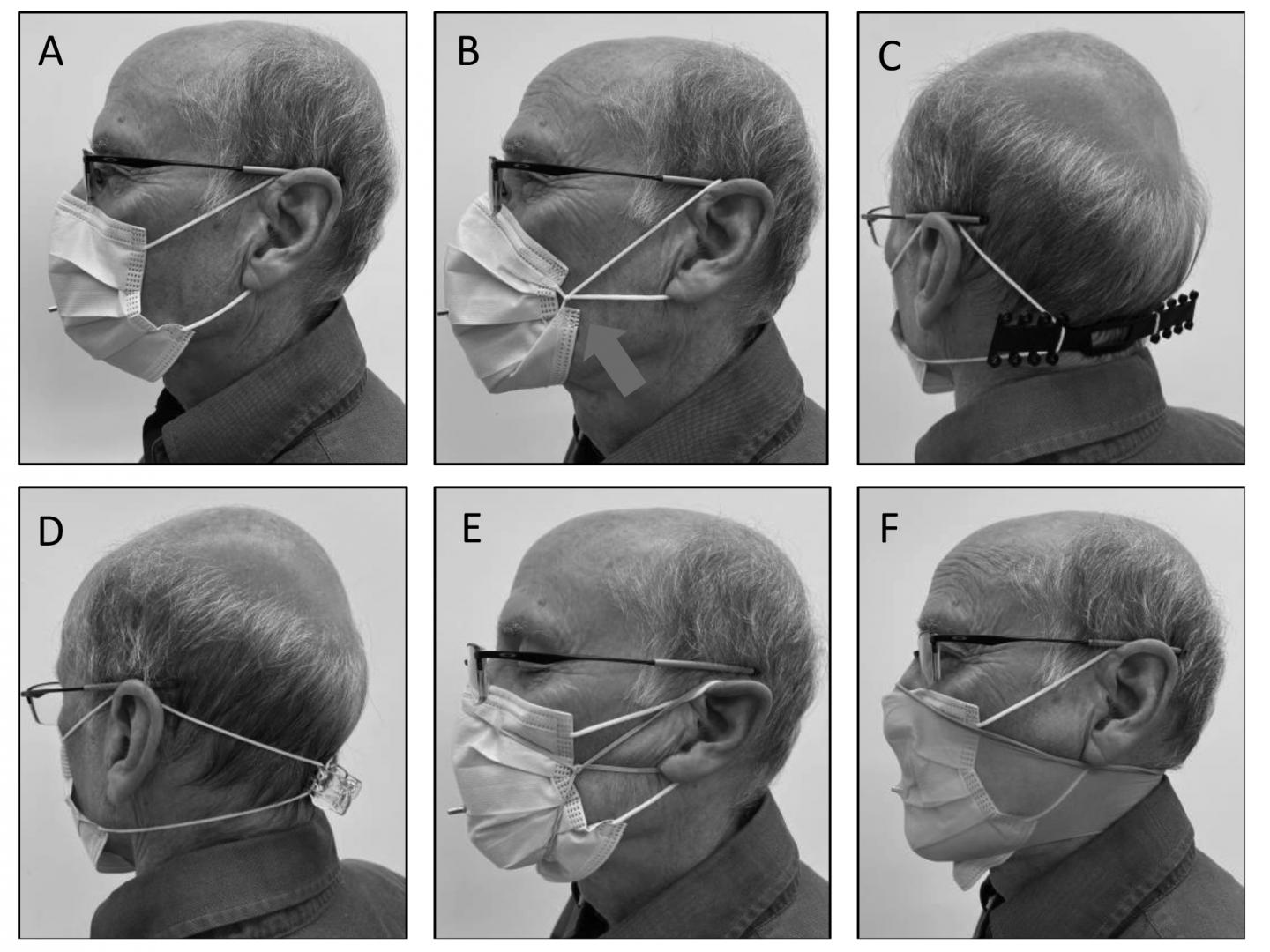Masks are primarily intended to keep us from spreading germs - a surgeon does not wear a mask because she is worried about her patient giving her a disease, she is wearing it to make the other person safer.
All masks do something, even a bandana does something, but UNC School of Medicine scientists, in collaboration with the Environmental Protection Agency, researched the protectiveness of various kinds of consumer-grade and modified masks, assuming the mask wearer was exposed to the virus, like when we interact with an infected person. If you don't want to read any further, the best mask you can buy is the 3M 9210 NIOSH-approved N95 Respirator.

A mask w/ear loops (A) modified by tying the ear loops and tucking in the side pleats (B), attaching ear loops to a 3D-printed “ear guard” (C), fastening ear loops with a 23mm claw-type hair clip placed behind the wearer’s head (D), placing ring of three, ganged, rubber bands over the mask and around the wearer’s ears (E), and sliding a 10-inch segment of nylon hosiery over the fitted mask (F).
They found that some masks were as much as 79 percent effective at blocking particles that could carry the virus. These were masks made of two layers of woven nylon and fit snug against the wearer's face. Unmodified medical procedure masks with ear loops - also known as surgical masks - offered 38.5 percent filtration efficacy, but when the ear loops were tied in a specific way to tighten the fit, the efficacy improved to 60.3 percent. And when a layer of nylon was added, these masks offered 80 percent effectiveness.
the researchers used a recently described methodological approach based on the OSHA Fit Test to determine the fitted filtration efficiency (FFE) of a variety of consumer-grade and improvised facemasks, as well as several popular modifications of medical procedure masks. Seven consumer-grade masks and five medical procedure mask modifications were fitted on an adult male, and FFE measurements were collected during a series of repeated movements of the torso, head, and facial muscles as outlined by the OSHA Quantitative Fit Testing Protocol.
Here are the different mask types with filtration efficacy. Bolded below is the top-of-the-line N-95 mask, which proved to be 98 percent effective.
Consumer-grade facemasks:
2-layer woven nylon mask, ear loops, w/o aluminum nose bridge: 44.7%
2-layer woven nylon mask, ear loops, w/ aluminum nose bridge: 56.7%
2-layer woven nylon mask, ear loops, w/ nose bridge, 1 non-woven insert: 74.4%
2-later woven nylon mask, ear loops, w/ nose bridge, washed, no insert: 79%
Cotton bandana - folded Surgeon General style: 50%
Cotton bandana - folded "Bandit" style: 49 %
Single-layer woven polyester gaiter/neck cover (balaclava bandana): 37.8%
Single-layer woven polyester/nylon mask with ties: 39.7%
Non-woven polypropylene mask with fixed ear loops: 28.6%
Three-layer woven cotton mask with ear loops: 26.5%
Medical facemasks and modifications:
3M 9210 NIOSH-approved N95 Respirator: 98%
Surgical mask with ties: 71.4%
Procedure mask with ear loops: 38.5%
Procedure mask with ear loops + "loops tied and corners tucked in": 60.3%
Procedure mask with ear loops + "Ear Guard": 61.7%
Procedure mask with ear loops + "23mm claw hair clip": 64.8%
Procedure mask with ear loops + "Fix-the Mask (3 rubber bands)": 78.2%
Procedure mask with ear loops + "nylon hosiery sleeve": 80.2%






Comments